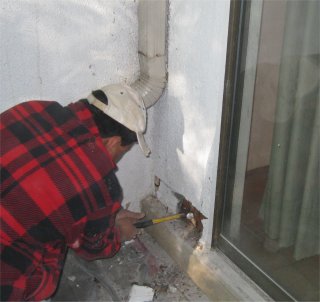
|
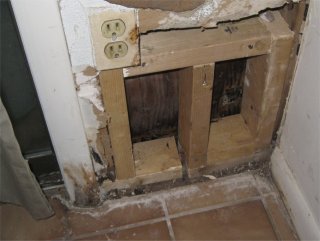
|
Failed stucco is cut off to patch. It had been
patched before, without getting to the root of the problem.
|
Rotted studs and bottom plate is patched.
|
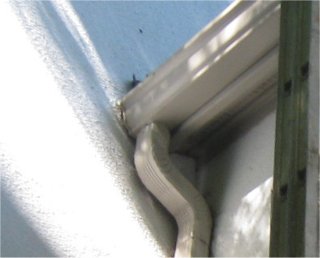
|
The culprit here is that the roof had a gap at the edge that
you could stick your hand in. The water ran down to the
basement and rotted the studs.
I was too lazy to climb up and take a picture, but we covered the hole
with sheet metal and a bunch of Henry. You can see the edge of the
kickout flashing we put on to deflect water into the gutter, instead of
between the gutter and the house.
If you have a townhouse in Reston, Virginia, or anywhere, you may want
to check where the roof meets the stucco wall.
|
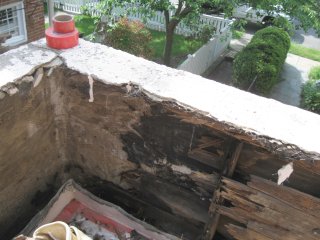
|
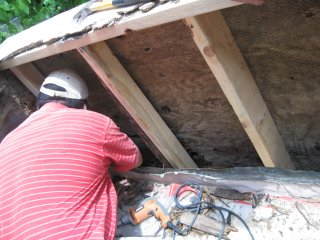
|
We tore off the failed stucco on this balcony to find the old
framing and sheathing had rotted away.
|
We put in new 2 by 6 studs. The plywood on the inside shows
that this balcony had been rebuilt or added on since 1926.
|
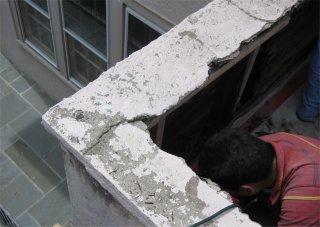
|
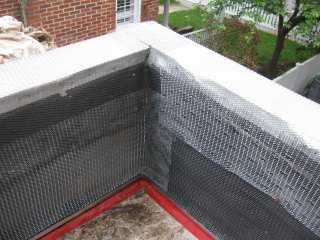
|
The culprit is this flat porous
stucco cap. Water goes right through the stucco and rots the wood below.
|
The top is covered with
aluminum. A layer of new flashing is put on the bottom flashing. The
bottom is terminated with a weep screed about 3 inches above the flat
roof. Studs are covered with 2 layers of tarpaper and self furring
metal lath.
|
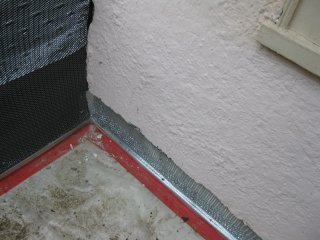
|
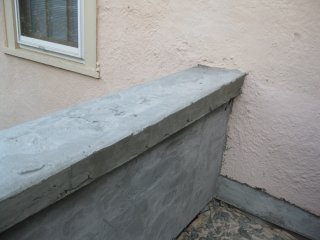
|
The stucco is cut back on the house far enough to put on a
new flashing overlapping the existing flash. The bottom is terminated
with a weep screed.
For more about flashing, More about flashing
|
The brown coat showing the new cap, and the patch against the
old house. The top of the cap will be rounded for water run
off.
|

|
1920's dash on texture is duplicated, and hopefully
this will last a few thousand years.
|
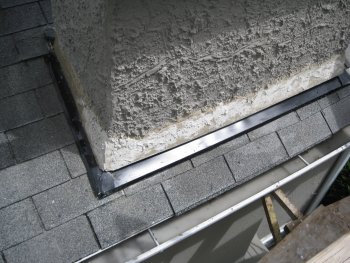
|
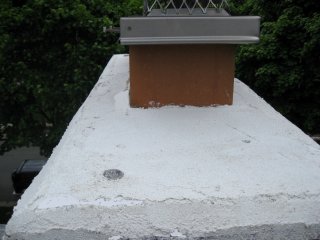
|
You may have just seen this picture. This should solve the
chimney leak.
|
As a matter of routine, we re-coat the chimney cap, another
source of chimney leaks and stucco failure.
I put in a quarter, because I didn't have a dollar coin.
|











